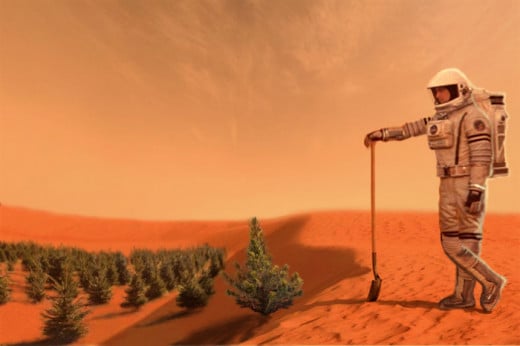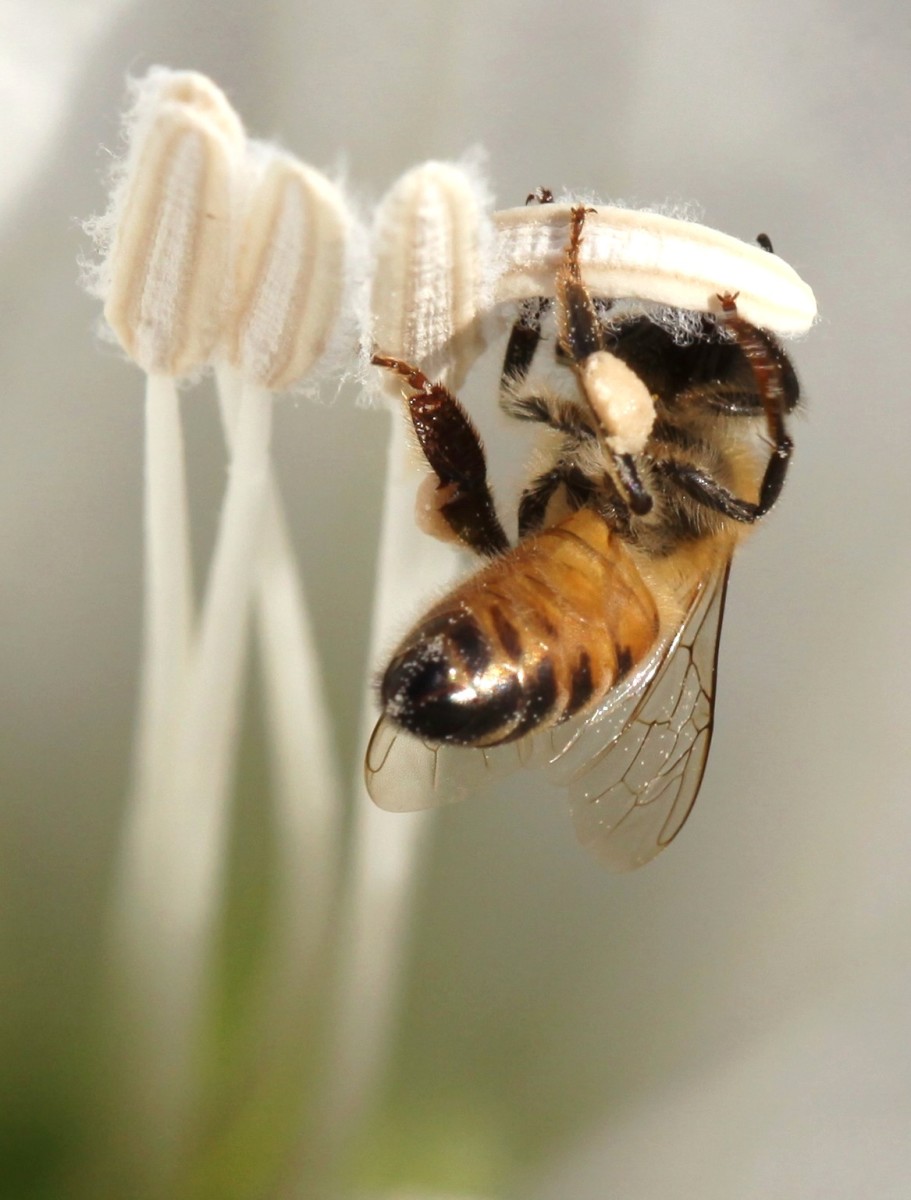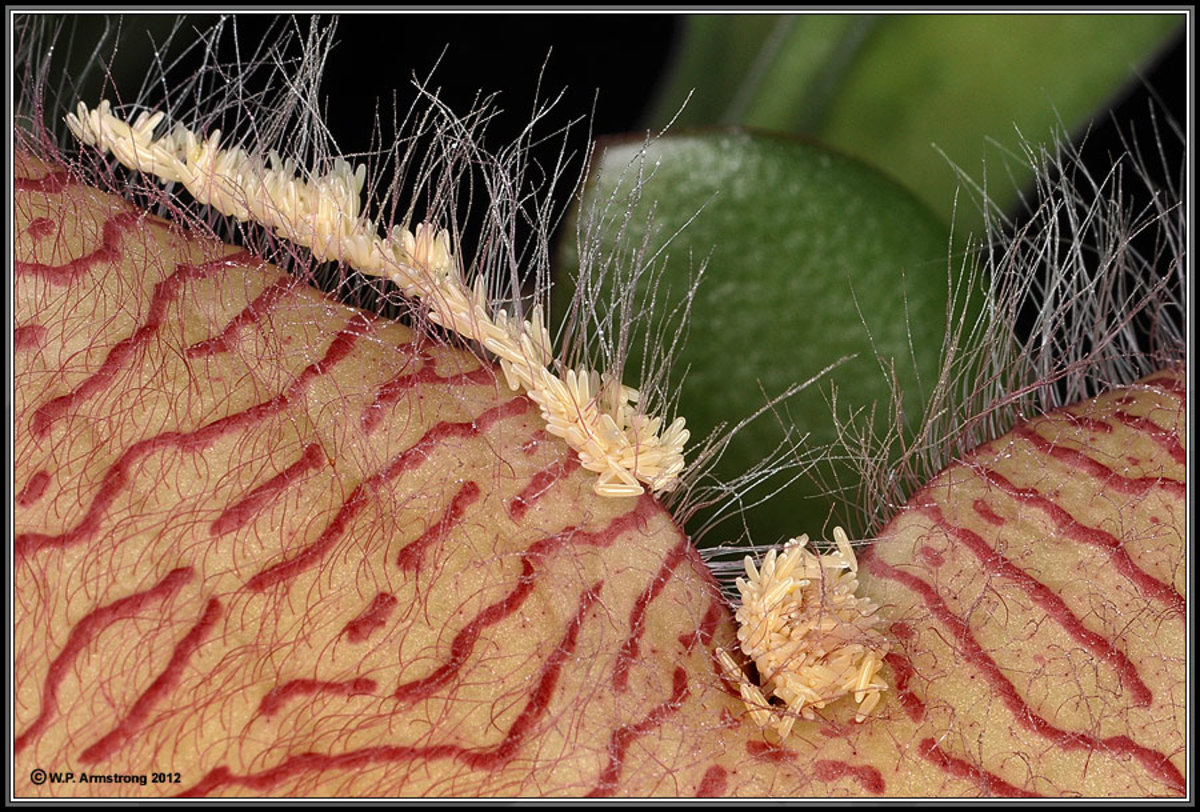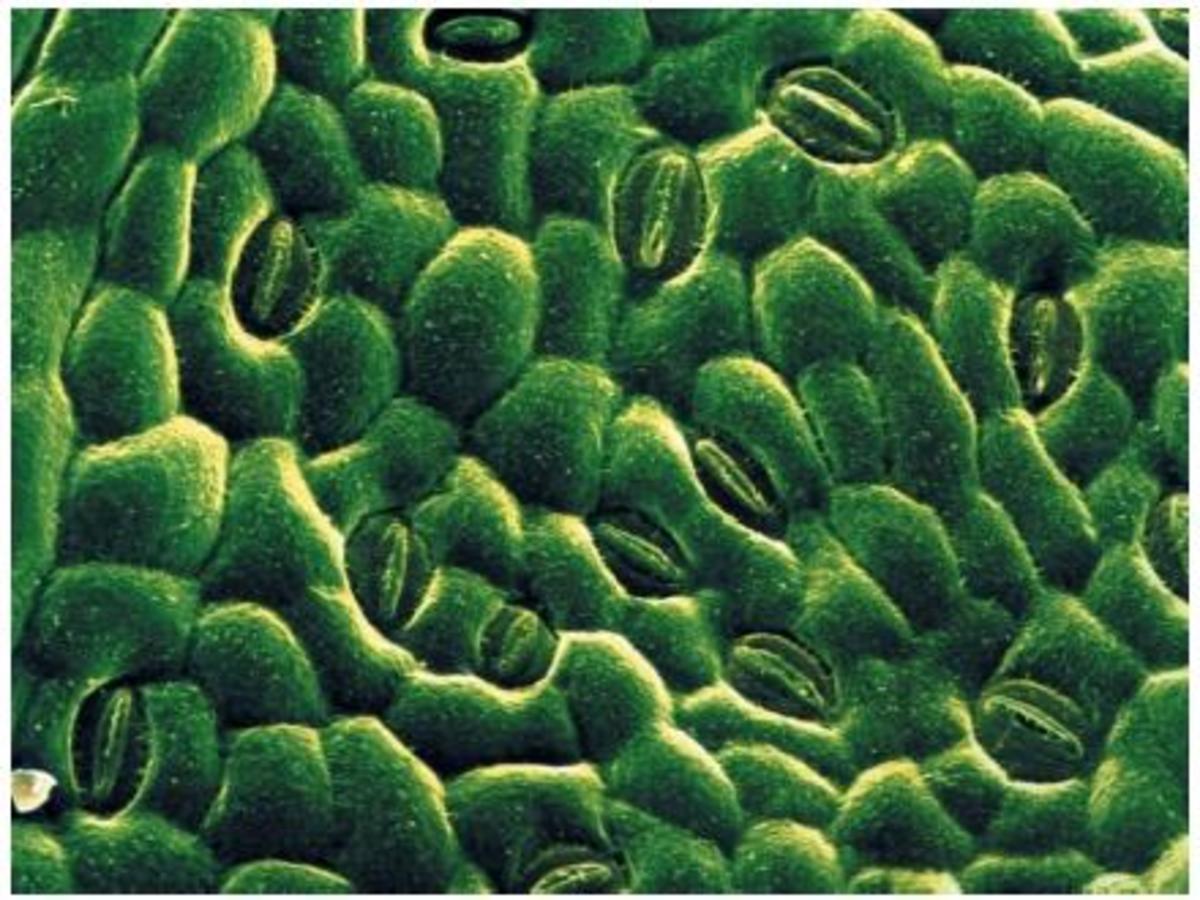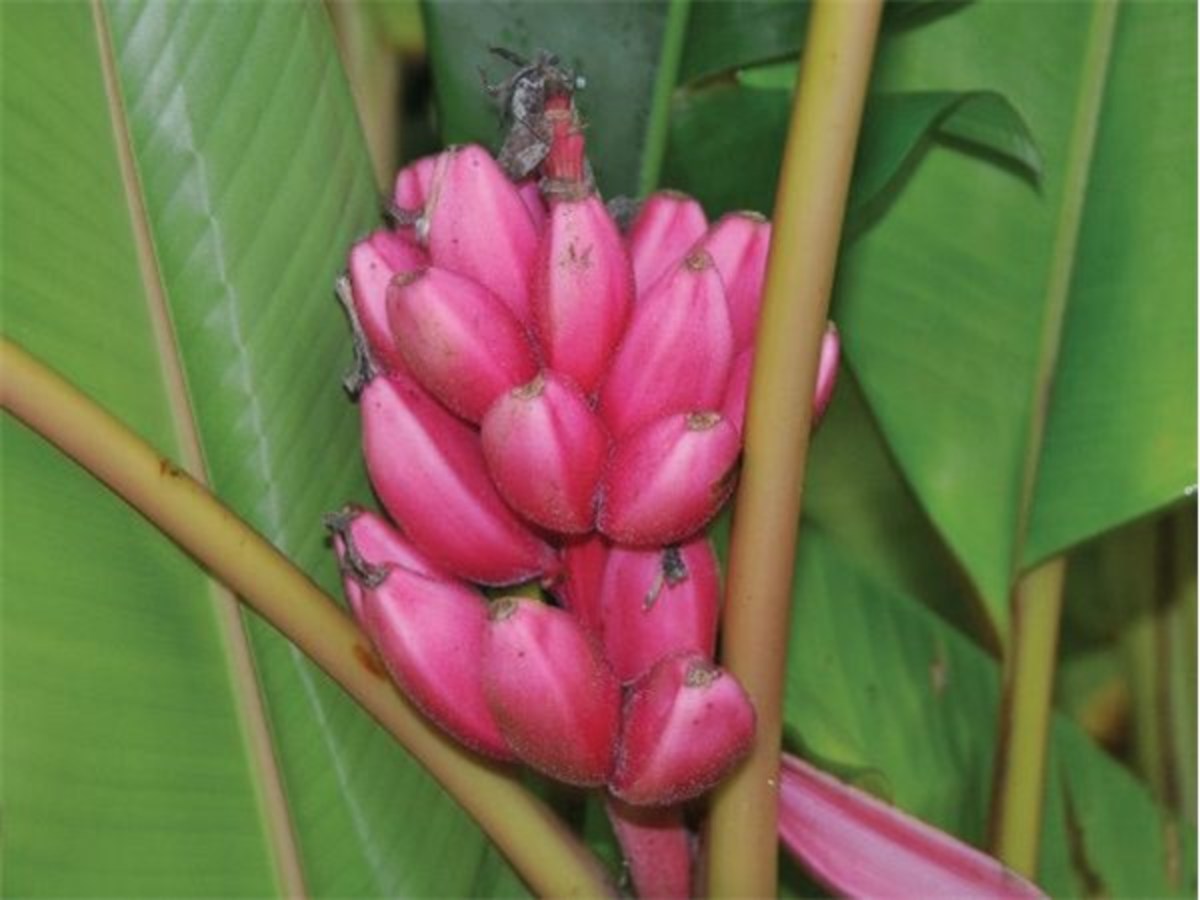clones, apomicts,and somatic plants- Are TOMORROW'S FOODS?
Keywords:
Global Warming. Greenhouse Effects. Green Revolution. Genetic Vulnerability. Totipotency. Callus. Sexual and Asexual Reproduction. Climate Change.


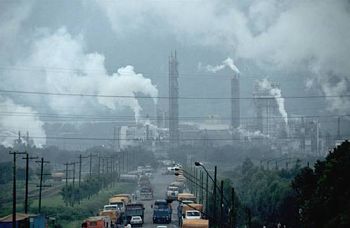

Introduction
The year is 2100, the ozone layer is almost depleted, carbon dioxide is about 600ppm compared with 300 ppm in the year 2010, methane and other anthropogenic generated gaseous pollutants is beyond mitigation. Temperature is between 40-60ο C, global warming is the menu of the day. The polar ice caps are beyond recovery and marine life is almost extinct because of high salt content, the once productive lands were gone, acid rain can't be avoided, field crops is history due to greenhouse effects, water is becoming a precious commodity, dust storm is a common occurrence and other aberrant weather systems that brought untold misery and human loss, the environment is very hostile to everyone, Mother earth is dying.
Human population has been decimated to half based on the population count of 10 billion in the year 2050. Humans live underground now, venturing only at night when a temperature is cooler under protected covering. Travel is through underground highways. A new world government was formed, the supreme commander is elected every three years by representative government of the eight world's regions, namely, North America and the Caribbean (NAC), Middle East and North Africa (MENA), South and Central America (SACA), Europe (EUR), Africa (AFR), South East Asia (SEA), and Western Pacific (WP). The present supreme commander is America.
So, how do humans survive in this hostile environment? this underscores the relevance of clones, apomicts, and somatic plants. But, what really happened? The land before this.
there are limits to the extent that human beings can manipulate their environment. the understanding and respect of these limits will influence our biological and cultural survival
Richardson and Stubbs, 1977
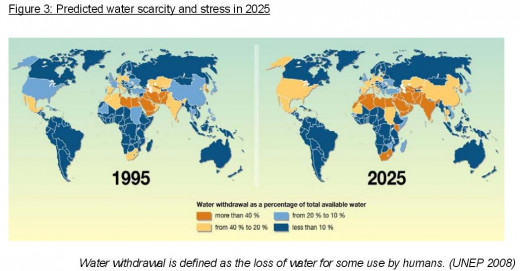
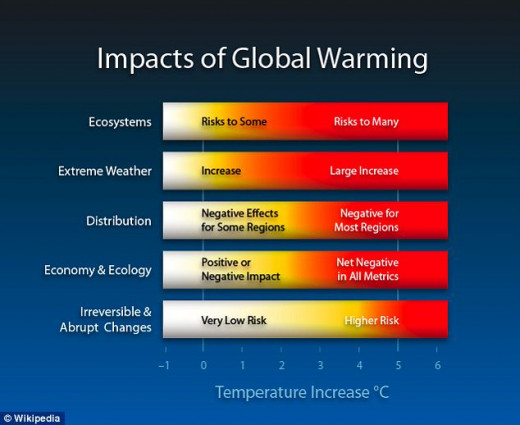
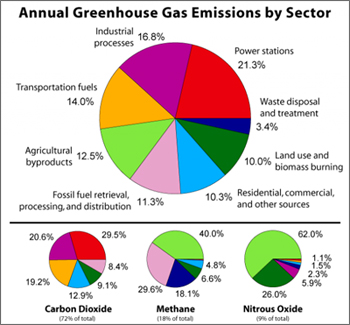
World climate in year 2050
Catapulting ourselves in the year 2050, let's look at the predicted scenario midway to 21st century.
- water scarcity, ancient aquifers are drying underground due to excessive agricultural use. Water is now a precious commodity.
- drought, a commonly observed phenomena throughout the land, crops are dying due to high temperature and lack of water
- carbon dioxide, a greenhouse gas, rather than the raw material for photosynthesis have increased in concentration in the last 25 years as an air pollutant
- aberrant weather system such as El Nino, Typhoons, Tornados, floods, and others' destroying properties and human lives.
- global warming has intensified due to the effects of greenhouse gases and increased in temperature.
- desertification, salination, acidification, among others have affected most of the arable lands worldwide
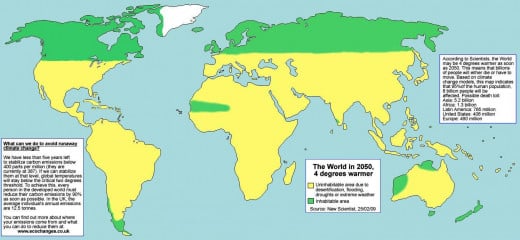
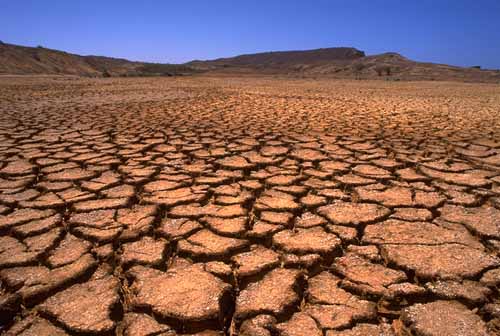
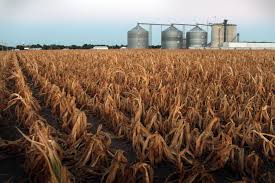


Anthrophogenic Errors of the 20TH CENTURY
As we visited the history of the mid-20th century, one can immediately notice, the stark difference between the developed and developing countries is very real. Hunger and malnutrition in certain parts of the world while food surpluses in other countries especially during the rise of the so-called "Green Revolution" when adopted worldwide, first wheat in India in 1960's and rice in the Philippines in 1965. After 20 years of Green Revolution, the balance sheet was analyzed and according to Swaminathan (1984) while the technology tend to be land- saving technology, that means, there is no need to increase the land area for cultivation where significant yield increases per unit land area were already realized but, the technology does not resource neutral, farmers in the developing countries can not afford to buy fertilizers and pesticides associated with the new technology, only that, small farmers were lured with high economic returns. Further, the technology generated a lot of criticism such as economics, equity, employment, energy, and ecology concerns. Malnutrition and hunger were not solved. While highly developed countries bask on their food surpluses. they have to subsidize their farmers in order to survive. DEvelopng countries cannot afford to buy their products due to high price.Their food surplus live with them while millions are dying in other parts of the globe. Of course, we cannot blame them, in a material economy there are no neighbors.
The 25 major food crops of the world, ranked according to total tonnage produced
1. Wheat
| 13. Millet
|
2. Rice
| 14. Banana
|
3.Corn
| 15.Tomato
|
4. Potato
| 16. Sugarbeet
|
5.Barley
| 17. Rye
|
6.Sweetpotato
| 18. Orange
|
7. Casava
| 19. Coconut
|
8. Grape
| 20. Cottonseed oil
|
9. Soybean
| 21. Apple
|
10. Oat
| 22. Yam
|
11. Sorghum
| 23. Peanut
|
12. Sugarcane
| 24. Watermelon 25. Cabbage
|
Source: Harlan, 1975
DO YOU know?
- Was that barley the staple cereal of ancient Egypt? where was it used for making bread and beer in 8,000 BCE?
- the first maize hybrid was released in 1933 (USA)?
- Have plant cell 25,000 genes in their nucleus? 80 genes in their Chloroplast? 60 genes in their Mitochondria?
Genetic vulnerability of food crops
The genetic vulnerability of food crops can be defined as the susceptibility of food crops to catastrophic losses from pests or pathogens due to the narrowing of the genetic base. Other causes of genetic vulnerability include the loss of traditional agricultural lands caused by development, Political instability, etc.(Wikipedia, the free encyclopedia}.
That man has been dependent on plants for food, shelter, clothing, and industry for over 10,000 years. Before the advent of modern plant breeding, men has been using at least a thousand plants for its own needs. In India alone about 30,000 different cultivars of rice were grown(Wikipedia, the free encyclopedia). Genetic diversity was abundant during this period, crops have the wide genetic base. Today, mankind is planting and utilizing 180 species only for its needs and only three cereal crops, wheat, rice, and corn supplies 60% of the calorie requirement of man. Simply put, fewer and fewer species are being used to fed an ever-expanding population and the cultivars used are becoming genetically uniform(Wikipedia, the free encyclopedia)
The genetic vulnerability of crops can be best explained on the experience of US agriculture in the year 1970. During 1970, a pathogen of an unknown race of Helminthosporium maydis destroyed 15% of the US corn crops. Susceptibility was enhanced by the T-cytoplasm of corn variety planted that time. The pathogen binds to the mitochondria, the powerhouse of the cell, without energy, the plant looks blighted and turns brown. Every variety that has T-cytoplasm was wiped out. This is only one of the classic example of genetic vulnerability in crops. There are many others and this happened in the 20th century.
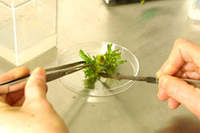
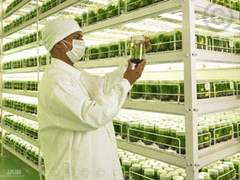
Take a QUIZ?
Match Column A with B. Letters ONLY.
COLUMN A COLUMN B
- Apospory a)sporophyte develops from gametophyte
- Diplospory b)haploid embryo(n) develops from haploid egg(n)
- Gametophyte c)pollination,no sexual union
- Sporophyte d) asexual seed production
- Androgenesis e)embryo develops from haploid sperm nucleus
- Apogamy f) haploid state
- Parthenogenesis g) diploid state
- Pseudogamy h) embryo sac from megaspore mother cell
- Apomixis i) ability to grow into a mature plant
- Totipotency j) embryo sac from somatic cell
SCORE: Excellent-10, Very good-8-9, Good-6-7, Average-5
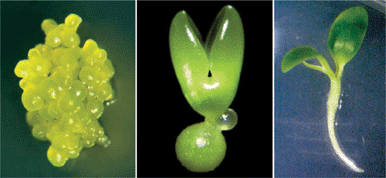
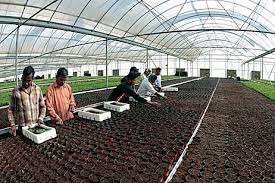
further search for NEW solution
The first agricultural revolution was achieved 10,000 years ago called the Neolithic Revolution when man changed his lifestyle from nomadic hunter -gatherer to a sedentary one. Domestication of plants and animals follow and growing of crops flourished. Agriculture was further developed until the 20th- century, when it was challenged by Malthusian doctrine, that "population will overtake food production", A new impetus among agricultural workers was drawn, then the creation of Green Revolution was realised. The term "green revolution" was coined by Dr. William Gaad, then director of USAID in 1968 (Swaminathan,1984).While great strides in yield increases were realized, but attendant to these are the social and environmental problems it generated. The gap between the poor and rich countries was further deepened, the haves and the have-nots had widened. Pesticide residue and ground water contamination was the immediate concern. To nullify the Malthusian doctrine (1798), a new approach to increasing food production and in order to address the earlier issues was initiated, the 3rd agricultural revolution may be called "Genetic Manipulation of Plants", aka. Modern Biotechnology was started initially in 1970's but further intensified in the year, 1990's. Presently we have a vast array of techniques associated with this technology, among these are:
- tissue culture
- protoplast fusion
- double haploids
- somatic embryogenesis
- organogenesis and mutation
- recombinant DNa, genetic engineering, transgenesis and genetically modified organisms(GMO's)
These techniques can be further grouped as In-vitro techniques for crop improvement, moreover, the new genotypes are the results of asexual reproduction hence, plants are born asexually.
Do you KNow?
the following chromosome numbers?
Human beings-46
Fruitfly(Drosophila)-8
Butterfly-380
Rice-24
Ophioglossum( a fern)-1260
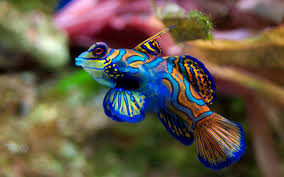
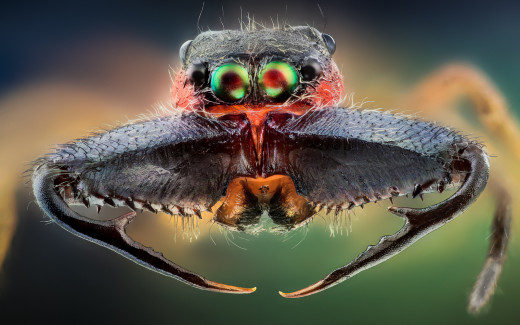
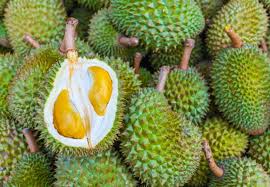
The present DAY- year 2100; Asexual reproduction in plants
There are two kinds of reproduction in plants, sexual and asexual. The former is produced by the union of paternal and maternal gametes, hence, offspring is genetically different from the parents, the later, is born without the benefits of sexual union, therefore, are born asexually and they are exactly the same with the maternal parent.
Much of the land vegetation is gone due to global warming and greenhouse effects. Food production is done under protected cover or controlled environment. Moreover, the majority of planting crops is by asexual means. Sexual reproduction is difficult to achieved since much the pollinators are gone, the remaining self- pollinated crop are planted in limited scale due to genetic degradation brought about by extreme homozygosity. Highly inbred individuals were less adapted to the unfavorable environment, much of the crops planted were either taken from tissue culture-derived plantlets, clonal or vegetative propagation, somatic plants, and apomicts. Largely, the present-day crops are the results of apomixis technology. For instance. hybrid corn is now an apomicts through introgression of apomicts transgenes via tripsacum, a wild relative of corn. Aside from the fixation of heterosis (hybrid vigor) in hybrid varieties, additional advantages of apomixis technology are as follows;
- polygenic traits will breed true
- any elite genotype can be transformed directly into a cultivar
- labor intensive-tissue culture in ornamentals will be superfluous
- problems of virus transmission in vegetatively propagated crops can be eliminated
- apomictic crops will always breed true, avoiding the production of undesirable offspring through the segregation of heterozygotes
- have a high ecological advantage over outcrossing plant species
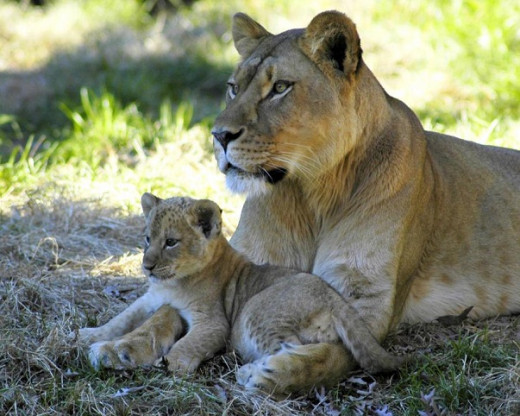
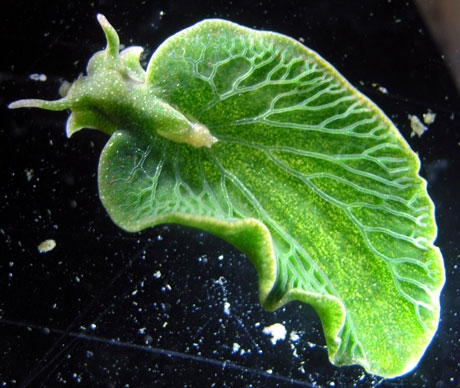
Occurrence and Distribution
Apomixis in not common among major food crops, moreover, there are three types of apomixis:
a) Sexual Reproduction Pathway;
- Sporophyte(2n)→Reduction(Meiosis)→Gametophyte→Eggcells→Fertilization→Sporophyte(2n)
b)Apomixis Pathway;
- Displospory (Gametophytic)→Sporophyte(2n)→Restitutional(meiosis/metosis)→Gametophyte→Eggcells→→Sporophyte(2n)
- Apospory(Gametophytic)→Sporophyte(2n)→Reductional(meiosis)→Gametophyte→Eggcells→→Sporophyte(2n)
- Adventitious Embryony (Sporophytic)→Sporophyte(2n)→Reductional(meiosis)→Eggcells→Fertilization→Sporophyte(2n)
Except for adventitious embryony, Displospory and Apospory proceeded to the Sporophytic stage without the benefit of fertilization, hence generating true to type offsprings.Adventitious embryony may require the semblance of fertilization or pseudogamy to stimulate endosperm development, moreover, offspring is still asexually produced. Examples of apomictic plants are, Mango, Mangosteen, Citrus, etc, many recalcitrant seeds are believed to be apomictic. Agriculture in the year 2100 exploits various forms apomixis for food production.
Clonal ⁄ Vegetative ⁄ Asexual Reproduction. These methods is achieved through cuttings(stem, leaf, etc.), tubers, corms, bulb, etc. are designed to produce true to type individuals while it afford genetic constancy of planting materials, the accumulation of viral infections becomes its disadvantage over time. Conversely, the amount required for virus free planting materials is a great constraint. To solve this problem, another venue is to subject it to tissue culture in order to generate virus free planting materials under mass plantlet propagation. This way, planting materials are produced at the shortest time. Examples of clonally propagated food crops are, Potato(tubers), Sweet potato(vine cuttings), Cassava(stem cuttings), Taro(corms), Onions(bulbs),Ginger(rhizomes), etc. have been propagated asexually.
Somatic plants. During tissue culture, embryoid plantlets that developed into diploid plants were observed. This is possible because of the unique characteristics of the plant cell, known as Totipotency, the ability of the cell to grow into a mature plant bypassing the sexual stage, thus the plant is asexually produced.From he callus stage, many somatic plants may be produced that have potentials in agriculture.
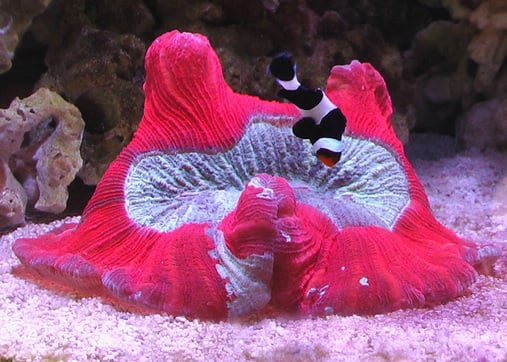
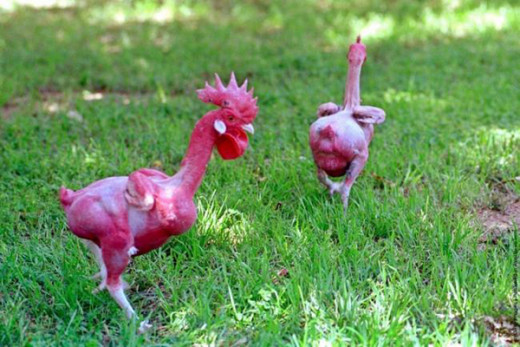
The Genetics of Asexually Propagated Plants
Sexual reproduction is a nearly universal characteristics of angiosperms or flowering plants. Moreover. There are few members of this group that do not conform to the general norm of the group but rather lock themselves in the none sexual mode of reproduction, the asexually propagated species. Genetically polyploids, this groups of food crops are difficult to raise from sexual seeds. Due to large gene complexes it possessed (triploids, tetraploids, hexaploids, etc.), genetic instability are observed among sexual hybrids. sterility, sporophytic-gametophytic incompatibility among others tend to segregate them from the rest of the group and are classified as the asexually propagated crops. The "asexuals" offers great potentials for agriculture to exploit, the large gene complexes wait to be unlocked to generate use full polyploids Conversely, in Angiosperms or flowering plants exhibits only two modes of reproduction-sexual and asexual. Examples of polyploids under vegetative or asexual propagation include abaca (Musa textilis)-a triploid, tobacco(Nicotiana tabacum)-a tetraploid, sweet potato (Ipomoea batatas)- a hexaploid and many others
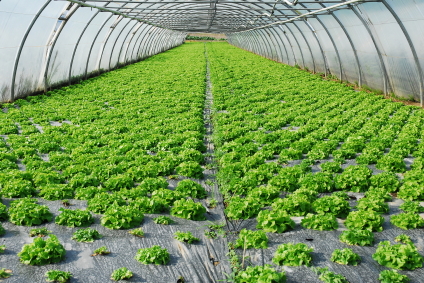
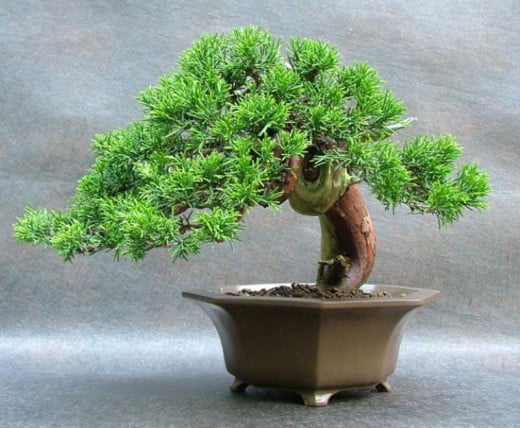
there is no doubt that human beings have made a more lasting mark on the world than any species before them, and that our influences today is by far the most reaching. Mechanized agriculture, while it does facilitate the production of great quantities of foods, may have the unfortunate side effects of causing the loss of large quantities of top soils. Fertilizers and insecticides, when used extensively, tend to have adverse environmental effects as well
Richardson and Stubbs, 1977
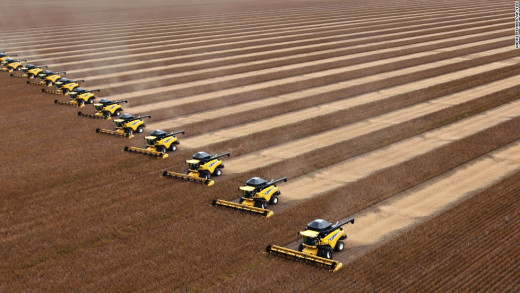
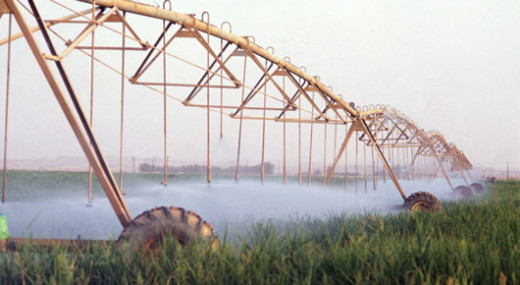
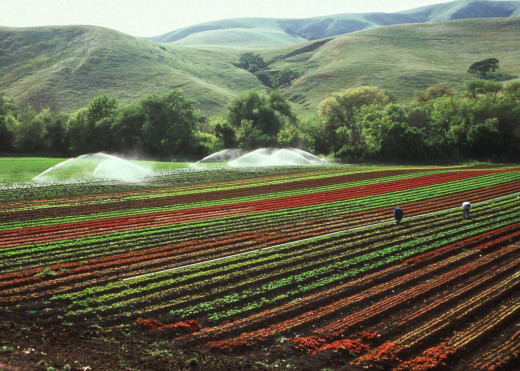
conclusion
Addressing the world food problem in the year 2100 is real. The use of apomicts, clones and somatic plants are only one of the approaches, but what is alarming if we just wait without doing anything, the scenario of the year 2100 is a foregone conclusion.
When Thomas Malthus wrote his essay on the principles of population in the year 1798, predicted that, human population will increase at geometric scale while food production at the arithmetic scale since food production cannot cope up with increasing population, it created social, political, and economic problem. But world food problem today is not Malthusian, but rather the inequitable distribution of food, technological advances in the 20th century primarily benefitted the industrialized countries leaving a widespread hunger and malnutrition in developing countries. lastly, “we cannot solve our problems with the same thinking we used when we created them ”Quote from Albert Einstein.
Glossary
Androgenesis-a haploid embryo develops from the haploid sperm nucleus.
Adventitious embryony-a form of saprophytic apomixis in which somatic embryo are formed without a gametophyte stage, both asexual and sexual adventitious embryo can co-occur in a single seed.
Apogamy-development of sporophyte directly from gametophyte without fusion of gametes, such sporophyte have the same chromosome number as the gametophyte from which they have been derived.
Apomixis or Agamospermy-a molecular strategy for the generation of genetically identical seeds without fertilization.
Apospory-is the development of unreduced embryo sac from somatic cells, the reduced megaspore degenerate and is replaced by a somatic cell.
Callus-represent n unorganized or undifferentiated mass of cells. They are generally composed of parenchymatous cells and usually undergo division.
Displospory-the reductional meiosis is replaced by a restitutional meiosis or mitosis'
Parthenogenesis-a haploid embryo develops from the haploid egg.
Pseudogamy-pollination serves as the stimulus for embryo development, but the egg and the sperm nuclei do not fuse. Fusion of polar nuclei and one sperm may occur to produce the endosperm.
References
Scholarly Articles
Bhat, V. et al.2005.Apomixis: an enigma with a potential application.Current Science 89(11)1879-1893
Kandemer, N and I. Saygili. 2015.Apomixis: new horizon for plant breeding. Turk.J. Agric. For.39:1409-1474
Koltanow, A. M. et al. 1995.Apomixis: Molecular strategies for the generation of genetically identical seeds without fertilization. Plant Physiology 108: 1345-1352.
Richards, A.J. 2003.Apomixis in flowering plants: An overview.hil. Trans. R. Soc. London. 358: 1086-1093.
Swaminathan, M. S. 1984. keynote Adress Genetic manipulation in crops-scientific, social, economic and ethical implications. In.Mujeeb-Kazi and L. A. Sitch.(eds).1989.Review of advances in plant biotechnology, 1985-1988,2nd International Symposium on Genetic Manipulation in Crops. Mexico, D, F, Mexico and Manila. Philippines: CIMMYT and IRRI.328pp.
van Dijk, P. 2003. Ecology and evolutionary opportunities of apomixis: Insights from Taraxacum and Chondrilla. Phil. Trans. R. Soc. Lond. 1113-1121.
van Dijk, P. and Jos van Damme. 2000.Apomixis technology and the paradox of sex.Trends in Plant Science. 5(2):81-84.
Whitton, j. et al. 2008. The dynamic nature of apomixis. Int. J. Plant Sci. 169 (1):169-182.
Handouts in Agronomy, Horticulture, and Plant Breeding
INTERNET sources
www. Flickr. com, www, google. com., www. national geographics. com., www.nature.com., www. pans. com., www. Wikimedia. com., www. Wikipedia. com.
